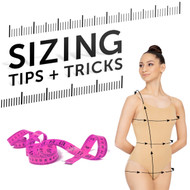How to Measure Dancers for the Perfect Fit Every Time
Posted by REVOLUTION on Feb 15th 2021
Accurate measuring will save time, money, and help your dancers stay focused on what matters most.
After 25 years of business and sizing thousands of dancers, Revolution has learned the dos-and-donts of measuring. We know that incorrect sizing can cause studio owners to incur additional costs such as shipping costs or even credits given to customers if their client is extremely unhappy. Not to mention, ordering the wrong size wastes valuable time since it requires a whole exchange process to get the correct product.
Yes, sometimes exchanges are inevitable (that's why we have created super flexible policies to make it as easy as possible to do an exchange). That being said, we are big believers in doing it right the first time! Measure twice, order once. Here are some tips on when to measure your students and how to measure for the most accurate sizing!
When to Measure Your Dancers
Do you take measurements at the beginning of the year or leave it up to parents? Should you measure again before recital?
If you're selling dancewear at your studio, it's best not to leave sizing up to chance (or to parents, without at least a little guidance on measuring best practices). It is especially important to have control over sizing if you are using an online dance shop like Nimbly where parents are going to be responsible for placing the orders themselves. You'll want to make sure that parents know what size their child is and how to measure their kids correctly, so we suggest giving them a boost at the beginning of the year with one of these options:
- Sizing Event: Many of our customers have seen great success by holding an in-studio sizing event. Some studios will offer sizing on-site during studio open houses, or as a part of registration day. During the event, you'll be able to start them off on the right foot with accurate measurements for back-to-school.
- Sizing Appointments: If you would rather avoid a large influx of students, we have also seen studios set up a calendar system—such as Calendly or another similar calendar app—where students and parents can book a fitting slot that is convenient for them, and simply show up to the studio for their sizing appointment.
The bottom line—if you're selling dancewear at your studio, it's a great idea to get your students off on the right foot by helping them to find their correct size at the beginning of the dance season. During your initial sizing event, be sure to give parents a demonstration of how to measure properly so that if their child hits a growth spurt later in the year, they'll have a better sense of what to do.
To help your dance parents out, you can download and print our "Sizing Tips & Tricks" flyer that we have put together to make measuring and sizing a no-brainer!
PRO TIP: The most important measurement of all is the girth measurement.
This measurement begins at one shoulder, loops around between the legs and comes back up to the same shoulder. The girth measurement indicates how long the dancer is, which translates to how long the body of the garment will be.
If the girth of a garment is too short, the dancer will have serious problems with riding up, bunching, and feeling squeezed. This is not good for movement or dancing. If the girth of a garment is too long, the top could sag or droop in ways that prevents the dancer from moving freely. It is much easier to take a garment in at the side seams than it is to re-adjust the vertical length.
If a dancer is between sizes, we always recommend going with the size that most closely fits the girth measurement, and then adjusting the sides of the garment from there.
How to Measure: A Step-By-Step Guide
Step 1: Get a flexible measuring tape, as well as a paper + pen. If you record sizing information directly in your studio management software, it's best to make this a two-person job. One person does the measuring, and the other enters the info into your system using a laptop or a tablet.
Step 2: Be sure that the dancer you are measuring is wearing a leotard or other tight-fitting clothing. Measuring over sweatpants or baggy clothing is not going to give you the most accurate measurements.
Step 3: Have the dancer stand with their feet hip-width apart with the feet parallel. The dancer's arms should be relaxed down by their side while they stand up tall. No slouching, keep the ribs relaxed (no arching) and no sucking in the tummy!
Step 4: Measure the girth. Pick a shoulder, and place the measuring tape at the middle of that shoulder. Loop the tape down, between the legs, and back up to the same shoulder. Don't pull too tightly, or leave slack in the tape.
Step 5: Measure around the fullest part of the bust. To help get the best measurement, have the dancer take a deep breath and then exhale. Take the measurement on the exhale so that the dancer's ribs will be relaxed and not holding in air.
Step 6: Measure the natural waist. Have the dancer bend to one side. The crease that forms is considered the natural waist, and that's where you'll want to measure. When they stand up straight again, measure the circumference of the natural waist.
Step 7: Measure around the widest part of the hips. Be sure the tape is laying flat to the body.
Step 8: Carefully read and interpret the size chart of the garments that you are ordering. Pay special attention to the girth, making sure to use that measurement as the primary guide for your size selection.
That's it! If you're doing in-class measurements—perhaps it is Costume Sizing Week at the studio—we recommend measuring dancers a few feet away from other dancers so no one feels self conscious or uncomfortable about others knowing their measurements. We want all dancers to feel great about themselves and what they are wearing on stage!
Need a quick reference of all of the steps we covered? Watch, bookmark, or share our Sizing Tips + Tricks video for easy reference!





